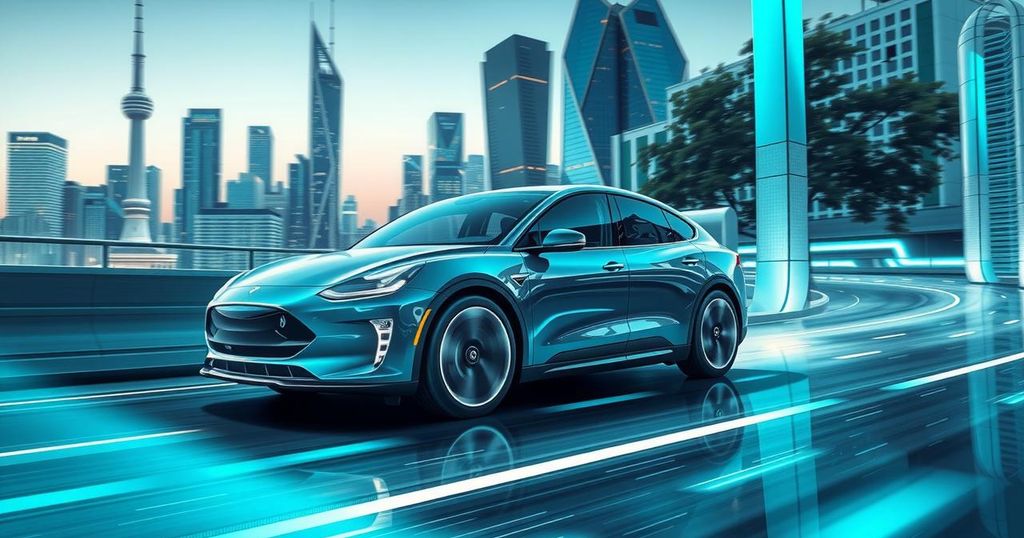Chinese Automakers Surge Ahead with New Travel Technology

- China’s automakers outpace Western rivals in technology.
- BYD and Chery lead rapid development processes in vehicles.
- Chery adapted the Omoda 5 SUV for Europe in six weeks.
- Chinese automakers are reshaping global automotive competition.
- Manufacturers like BYD maintain control over critical components.
China’s Automakers Defy Traditional Manufacturing Timelines
China’s automakers are forging ahead with remarkable advancements in travel technology, significantly outpacing Western competitors like traditional U.S. and European manufacturers. BYD and Chery in particular have shown extraordinary capability in shortening vehicle development times, which is a game changer in the global automotive market. The ability to transform vehicle concepts into consumer-ready products at a fraction of the time of their competitors has propelled these Chinese companies into a dominant position within the industry — with a notable emphasis on electric vehicles (EVs).
Chery’s Quick Adaptation Illustrates Competitive Advantage
A standout example from this revolution is Chery, which efficiently re-engineered the Omoda 5 SUV for European roads in just six weeks. Unlike Western carmakers, who often encounter regulatory and production bureaucracies, Chery’s rapid adaptation highlights just how nimble Chinese firms can be. Senior vehicle-dynamics expert Riccardo Tonelli noted that such a swift change would have been extremely challenging for a European firm, shattering the preconception that major overhauls take years to implement. It underscores how speed has become an undeniable asset in the automotive landscape.
BYD and Chery Strengthen Their Position Globally
Alongside Chery, BYD leads as China’s largest carmaker with ambitions that stretch globally, marked by a staggering production capacity and innovative practices. Unlike many of its Western counterparts, BYD maintains control over critical components, especially batteries, allowing it to mitigate risks and enhance efficiency in its supply chain. This vertical integration has helped BYD rapidly roll out over 40 new models since 2020, far ahead of any comparable outputs from competitors like Tesla, establishing a relentless pace of innovation that is hard to match. Meanwhile, Chery continues to build on its output, carving out a notable footprint across more than 100 countries, indicating a growing acceptance of Chinese vehicles abroad.
Legacy Automakers Respond to New Challenges
This surge from Chinese brands comes at a time when traditional automakers like General Motors and Volkswagen are re-evaluating their strategies in light of increased competition. These legacy manufacturers find themselves under significant pressure to enhance their product development cycles, striving to adopt quicker and leaner methodologies akin to their Chinese rivals’. With Chinese vehicles often listed at competitive prices, especially in key markets, consumers are finding them increasingly attractive options. The focus of these companies is firmly on affordability and cutting-edge technology as a means to gain market share, particularly in Europe, where they seek to challenge longstanding automotive hegemony.
Chinese Automakers Poised for Future Growth
Looking to the future, Chinese automakers are expected to steer the industry towards unprecedented transformations, thanks to their emphasis on innovation and adaptability. Although they still face skepticism in Western markets regarding quality and safety, their consistent performance and commitment to improving brand recognition cannot be understated. As firms like BYD and Chery continue to innovate while managing faster production cycles, it seems that these manufacturers will only solidify their hold on a rapidly evolving automotive landscape. Their approach not only sets them apart from traditional players but could redefine what the global automotive industry will look like in the years to come.
In conclusion, Chinese automakers, through brands like BYD and Chery, are setting a new standard in the automotive industry with rapid growth, innovative practices, and a focus on electric vehicles. Their ability to adapt quickly to market needs, combined with competitive pricing, is reshaping the global automotive scene. As these companies continue to expand internationally, they signify a shift in dynamics that legacies are compelled to respond to.




